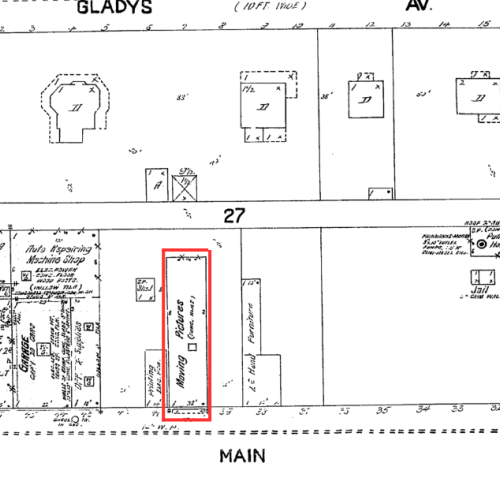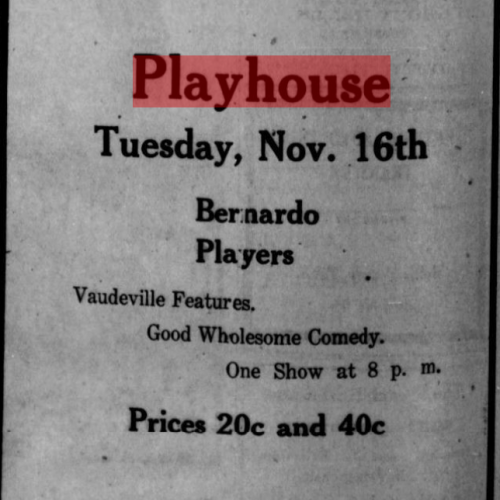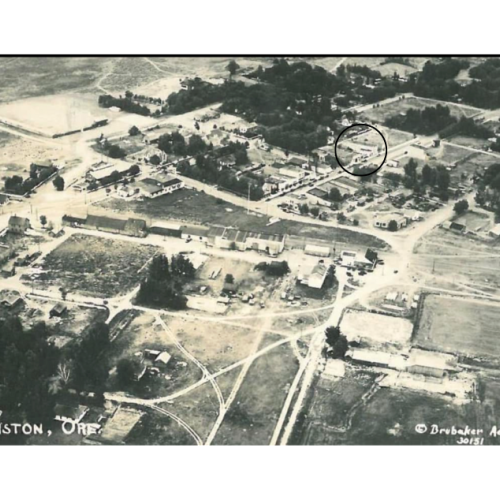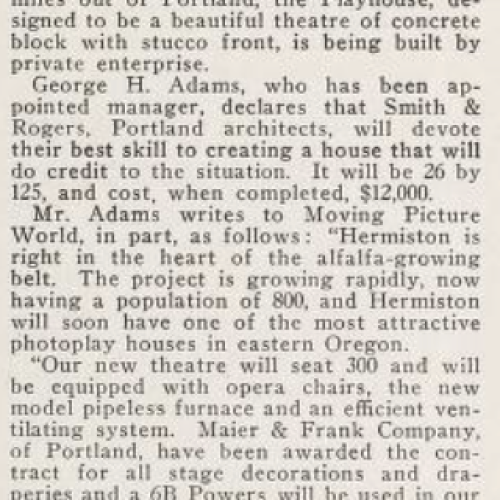The Hermiston Playhouse, located on the 8th block of Main Street, quickly became a staple of the city's public entertainment (1). Even before its opening, word of its creation spread rapidly, being referred to as "among Oregon’s prettiest playhouses" in the national trade journal Moving Picture World (2). The news even inspired surrounding cities to recognize the playhouse as a necessity for innovation (3).
The $12,000 theater was a concrete block with a stucco front, measuring 26 feet wide by 105 feet deep, and equipped with 350 seats. The lobby featured walnut furnishings and doors that opened into the auditorium, noted for its beauty. The auditorium included a 25x12 stage with red drapes, fixtures, and decorations, all mentioned in the Hermiston Herald as appealing to patrons. Additionally, the 8x6 projection room housed a Powers 6B Cameragraph projector paired with a General Electric Compensarc. The stage also had space for a pianist and violinist to entertain the audience (4).
Originally set to open earlier, the theater’s debut was delayed due to construction setbacks. In a brief note published on August 27, 1920, manager George H. Adams explained that the plaster and cement had not dried, preventing the installation of equipment and rendering the space unsuitable for guests (5). Despite the delay, Adams and owner C. H. Crandall officially opened the playhouse doors on September 15, 1920.

The Hermiston Herald, September 17, 1920. p.1. Historic Oregon Newspapers. (4)

Moving Picture World Journal, May 12, 1923. p. 40. Media History Digital Library (8)
The opening was met with praise and featured a screening of The Valley of the Giants, starring Wallace Reid and Grace Darmond. There were even requests from Mr. Crandall to expand the theater. Showings and events were promoted in local newspapers weekly throughout October. This continued until November 1, just a month and a half after opening, when Adams sold the house to A.W. (Art) Adamson who brought new energy and was praised in the Hermiston Herald for his exhibition experience (6).
The theater thrived under Adamson through 1921, breaking attendance records in December with a screening of The Old Nest (1921), starring Helene Chadwick. With this success, Adamson began 1922 by reducing children's pricing from 15 to 10 cents, making a small renovation, and adding a "Great White Way" sign at the entrance (7).
The theater changed ownership again when Adamson moved to Enterprise to manage a theater. He sold it to J. F. Morfitt in May 1922. Morfitt and Mrs. Morfitt quickly made changes, such as reducing prices from 35 to 30 cents (8). However, the theater closed under their ownership between 1922 and 1923 (9).
This wasn't the end, as the city’s American Legion bought the venue in April 1925, repainting and kalsomining the theater and renaming it the Legion. They appointed Raymond Chowder as temporary manager alongside a five-person board (10).
The theater remained in their hands until January 1926, when Art Adamson returned to Hermiston and repurchased it (11). The house was renamed the Playhouse, and screenings continued under Adamson’s ownership, with Henery Kline as manager. A small renovation in mid-1927 included a new projector and screen (12).
However, in October 1927, Adamson sold the theater to Lucy A. Sandys, an experienced exhibitor, and it was renamed the Columbia Theater. The change brought renovations, repainting, and new lighting (13). The Columbia operated with varying success, with Sandys later disappearing from records and Walter E. Olson mentioned as manager (14).
The Columbia closed in 1930 (15) and became the property of Oasis Theaters Incorporated (16).
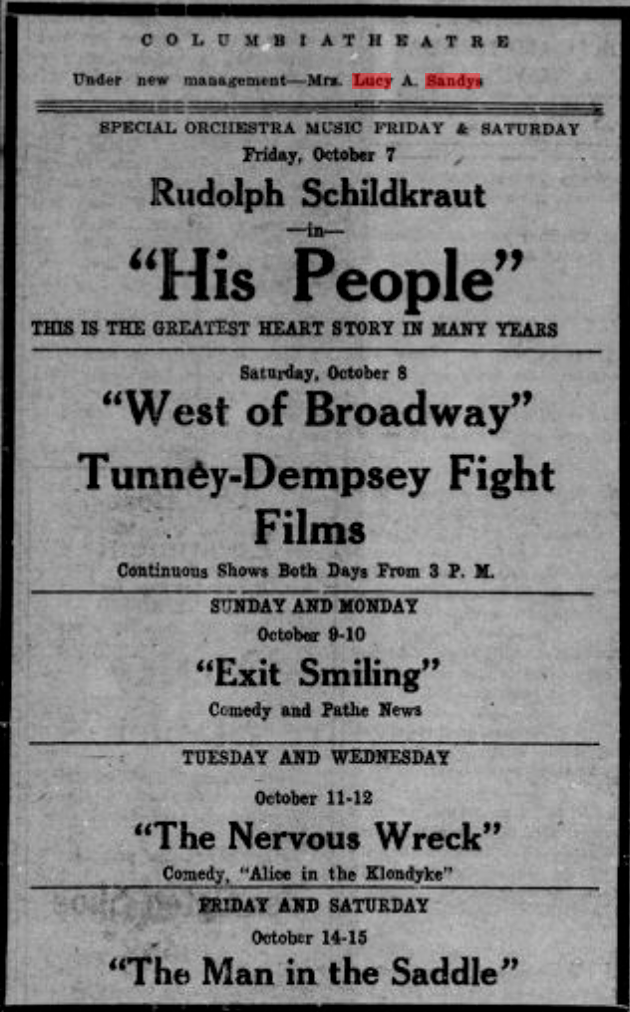
The first program for the Columbia Theater advertised in the local newspaper.
The Hermiston Herald, October 6, 1927. p.1. Historic Oregon Newspapers.
